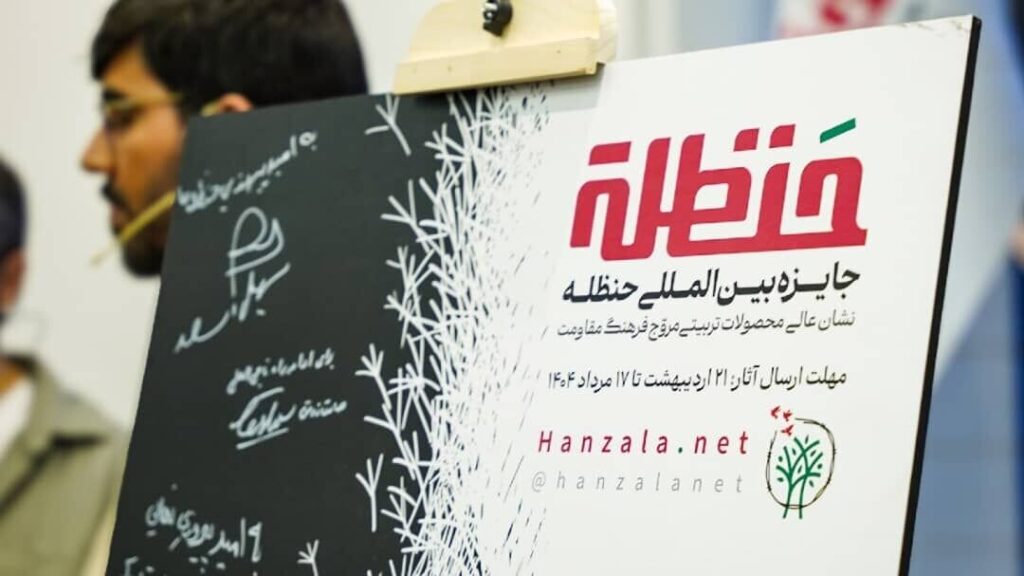Tehran – The International Hanzala Award, an international literary and cultural award, will prioritize children’s literature and adolescent literature exploring the theme of resistance, organizers announced.
The award, which aims to promote cultural production for younger audiences, evaluates submissions across a diverse media, citing Sadeq Zufan, the science secretary of the event, which he said at a press conference held in Tehran on Monday.
He detailed the scope and procedures of the competition and outlined five important categories for submission: books, toys, computer games, activity packages, creative education media.
“Our main focus lies in works specifically designed for children and adolescents, seeking to cultivate stories of resistance through the lens of culture and creativity,” he emphasized.
He added that the award is not just a ceremony, but a platform that encourages young creators to innovate and artistic expression.
He highlighted the important role of cultural production in shaping the values and perspectives of the next generation. The aim is to create engaging and thought-inducing content that resonates with the unique sensibilities of children and adolescents, whilst simultaneously instilling a spirit of resistance.
Zufan detailed the inclusion criteria and explained that the review board will evaluate each submission based on several key factors. “Effective communication of stories of creativity, originality and resistance is paramount,” he said. “We also assess the educational value of each job and the potential to inspire and empower young minds.”
The International Hansala Award is currently open for submissions from around the world. Zufan highlighted the international nature of competition, aiming to promote collaboration and exchange among creators from diverse cultural backgrounds. “We believe that the exchange of ideas and experiences is important to promote creativity and innovation,” he said. “The diverse voices of young creators help shape the narrative of resistance.”
The closing ceremony will be held following the review of submissions by mid-September, saying, “However, unlike other festivals, our closing ceremony is not the end of the journey. This will be part of a programme for selected products where financial support, publishing, marketing and international development will be.”
He also announced a cash award of 32,000 euros for winning entries. “We are not restricting this award to Iran. We are currently consulting with cultural activists from Lebanon, Syria, Yemen and several African countries. This is a global cultural initiative.”
Vahid Vali, executive director of the Hansala Prize, mentioned recent regional development and the awakening of global awareness of crime in the Zionist regime. He said, “A major event occurred in a world that we never overlook. At the heart of the land that has been lost many times, a movement began to overturn all calculations. This was not just a military operation. It was a redefinition of the true meaning of resistance.”
“The Zionist regime, with all the media and political tools, sought to erase Palestine from global memory. But today it has once again become the most important issue of the Islamic world, and even a free nation around the world.
“Media and news are just one aspect of the story. You have to turn resistance into a tool of play, entertainment, and educational. You get used to the truth that goes into your child’s life and is in favor of life in the future,” he said.
This award was established for exactly that purpose. He pointed out that it brings resistance from the news realm to the heart of families and classrooms.
“We don’t just honor the winners of this award. We support them and help them produce in bulk, create a market for their work, and pave the way for their international recognition. For us, this is more than just a program. It’s a historic need,” he explained.
Special guest of the session, Soheil Asaad revisited the importance of this character, focusing on the concept of “Hanzara” as a symbol of the award.
“Hanzara is more than just a cartoon character. He has become a collective conscience. Hanzara embodies a generation that has turned away from oppression, but has not stopped fighting. He reminds me that silence speaks more eloquent than words.
The International Hansala Award is expected to contribute significantly to enriching children’s literature and cultural production. The emphasis on the narrative of resistance reflects a broader cultural movement aimed at fostering generations with critical thinking skills and commitment to social justice. The award further aims to support the development of creative talent and provide a platform for young writers, artists and designers to introduce their work to a global audience.
Hanzara is a powerful symbol of Palestinian identity and resistance created by cartoonist Naji Al Ali in 1969. First appeared in 1969 and adopted that iconic pose in 1973, Hanzara is portrayed as a 10-year-old boy who faces his back and holds his hand behind him, representing the innocence and immobility of the Palestinian people.
The age of the character signifies Al Ali’s own childhood when he was forced to leave Palestine in 1948. Hansala’s tattered clothes and barefoot posture represent solidarity between the poor and the oppressed. Al Ali imagined Hanzara as an eternal youth, embodying the ongoing struggle for justice and return.
Despite the assassination of Alari in 1987, the character’s image continues worldwide, adorning walls, tattoos, jewels and serves as symbols of several movements.
sab/

